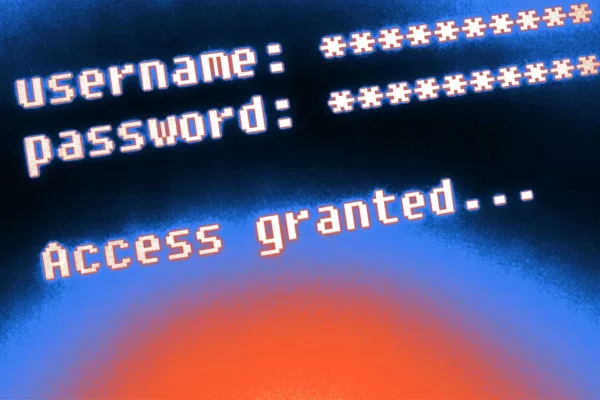
Smash and Grab: What to Do When Your Purse or Wallet Is Stolen

It’s habit—grabbing your purse or wallet right before you head out the door. Checking to make sure you took it out of the car, or remembered to take it as you exited a restaurant. This item, whatever shape or size, contains your identification, money, access to your bank account, and more. Always having your purse or wallet on you provides a sense of security, a sense of capability.
But when you suddenly don’t have those items you carry with you every day—whether by accident or by theft—it can leave you feeling extremely vulnerable. If your purse or wallet is stolen, there are certain steps you can take to reclaim some of that security and protect yourself from further financial fraud.
Step 1: File a Police Report
The first step after any theft is to file a report with your local law enforcement to let them know that you were robbed. Tell them when and how your wallet or purse was stolen, what it looked like, and provide them with a full list of what it contained. Request a copy of the report and keep it on hand. This can potentially help you recover the items you lost, but it’s also a vital step toward protecting you from future account or identity fraud. Many financial institutions will request copies of a police report in their investigation process if your account is used fraudulently.
Step 2: Contact Your Financial Institutions
If your debit card or checkbook was stolen, contact the bank or credit union where you have an account as soon as possible. If you lost credit cards during the theft, contact the credit card company as well. If your online banking or mobile app allows for this feature, you may be able to “turn off” your debit or credit card from your phone.
It’s important to act fast, to limit your potential losses to fraudulent activity. According to the Federal Trade Commission, if you report your card’s loss before any unauthorized charges take place you won’t be responsible for any of the incurred costs. However, if you report it within two business days after you learn of the loss, you could be liable for $50. If you wait between two and 60 days to report the loss, you might be responsible for up to $500.
Step 3: Request Replacement Cards
Once you alert your financial institutions to the loss, they can close your accounts to any new purchases and send you replacement debit and credit cards. Additionally, if you have any recurring monthly charges that are on autopay, be sure to update those with your new account numbers.
Step 4: Set Up a Security Alert
To further protect yourself from fraud, it’s important to alert the credit bureaus that you’ve been the victim of theft. This will make it harder for thieves to open a line of credit in your name. You can file a free fraud alert with any of the three bureaus, and they are required by law to alert the other two.
- Equifax: Equifax.com (1-888-766-0008)
- Experian: Experian.com (1-888-397-3742)
- TransUnion: TransUnion.com (1-800-680-7289)
If your credit isn’t locked or frozen already, now is the time to set up a free credit freeze. All three bureaus offer this feature at no cost to you—it essentially shuts down the use of your credit to open any new lines or loans. You can lift a freeze temporarily at any time, if you need to have your credit accessed later on.
Step 5: Replace Other Lost Items
Once you’ve taken steps to secure your financial accounts, you should make a list of any other important items you may have lost. Some items you might need to replace could include:
- Driver’s license: The Texas Department of Transportation makes it relatively easy to replace your driver’s license with their online card replacement feature as long as you can provide your driver’s license number, your date of birth, the last four digits of your social security number, and the audit number from your most recently issued card.
- Social Security card: While it’s best to store your Social Security card in a secure location, such as a safety deposit box, if it is stolen you can contact the Social Security Administration to replace your card.
- Other forms of ID: If your student ID, work ID, or military ID are stolen, contact the institution that issued the ID to report them missing and request a replacement.
- Insurance cards: You may carry your health insurance cards in your wallet for convenience. If they’re stolen, you can order replacement cards by calling your insurance company or visiting their website. It’s also a good idea to let them know your card was stolen to prevent any potential fraudulent insurance claims.
- U.S. Passport: If your passport is stolen while you’re in the United States, you can call the State Department at 877-487-2778 to report the loss and request a new passport. If your passport is stolen while you’re abroad, contact the nearest U.S. embassy or consulate. You can also report the lost passport online.
Step 6: Check Your Accounts Regularly
After you’ve taken steps to prevent charges on your accounts that you haven’t authorized, it’s important to monitor those accounts. There are three main types to keep an eye on:
- Your credit report. To do so, you can order a free credit report via annualcreditreport.com.
- Your credit cards. If you notice any fraudulent accounts or transactions, note them and alert your financial institution.
- Your bank account. Keep a close eye on your checking and credit card accounts for any unauthorized activity. The sooner you report it, the sooner those institutions can take action to protect you.
It’s not enough to keep a close eye on these accounts right after the theft—regular monitoring can help prevent future damage as well. If you have banking or credit card alerts, set those up to send you notifications on transactions and withdrawals.
Step 7: Protect Your Future Self
Being robbed or having your identity stolen is a nightmare. Going through it once is enough! Unfortunately, there are no guarantees it won’t happen again. To protect yourself from future theft:
- Only carry the cards you need. If you have multiple credit or debit cards but only use one consistently, leave the others at home. If you’re robbed, not only will the thief have access to fewer accounts, but you will also have backup cards at home if you need to make purchases or withdraw money from your accounts before a replacement card arrives.
- Store sensitive IDs in a secure location. Leave your Social Security card and passport at home or in a safety deposit box unless you absolutely need them. These items are more difficult to replace and can leave you especially vulnerable to identity theft if they’re stolen.
Remain Vigilant
While no one wants to lose their purse or wallet to theft, taking these steps should help protect you from any further negative consequences. And to help reduce the risk of becoming a victim again, you should always be careful with your property—never leave expensive items or documents with sensitive information in your car. Keep credit and debit cards to a minimum, and don’t carry around more personal identification information than you actually need on a daily basis.
Become an Amplify Member
Every Amplify account holder enjoys fee-free banking. That means no overdraft, maintenance, or other banking fees cutting into your pocket.


